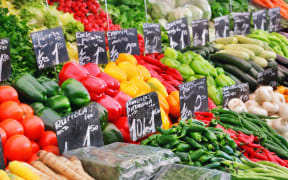A Ngāi Tahu market garden is getting a funding boost from the South Island Whānau Ora agency.
The garden would act as a catalyst for hapū-led food farming ventures.
The garden at Koukourārata, or Port Levy, on Banks Peninsula, is the original site where the iwi cultivated food to sell to colonists in the 1880s.
It would be used for education and research opportunities.
Ngāi Tahu said it reaffirmed the iwi's connection to the whenua.
The South Island Whanau Ora Commissioning Agency, Te Putahitanga o te Wai Pounamu, was investing more than $237,000 in the first stage of the initiative.
The project will be driven by a Steering Group including Lincoln University, the Lincoln-based Bioprotection Research Centre and specialist organic education provider, the Biological Husbandry Unit.
Te Putahitanga chair Norm Dewes was enthusiastic about the potential of the project.
"The cultural mapping research that Koukourārata Rūnanga had done, told them that whānau want to return to their lands.
"Their proposal ticks many boxes - more whānau eating healthy kai, a sense of well-being from working the land, increasing knowledge of their history and whakapapa, and the prospect of employment opportunities," Mr Dewes said.
Koukourārata Rūnanga spokesman Peter Ramsden said māra kai (cultivation) was just another healthy step towards a healthy community.
"What we really want is for our whānau to get their hands dirty, toiling the land, finding out for themselves about māra kai, permaculture, sustainability, papakāinga, and the whole range of food farming from traditional kai through to organic food production," Mr Ramsden said.
"We also see it as a great opportunity for our whānau to gain experience in biological sciences as a great platform for further education, enterprise and employment in a priority sector."
Using the historic 5-hectare garden site, tunnel house and existing community garden, the partners will grow the market garden concept into future farming activities in the takiwā, which potentially includes hundreds of hectares of Māori papakāinga and land reserves.


